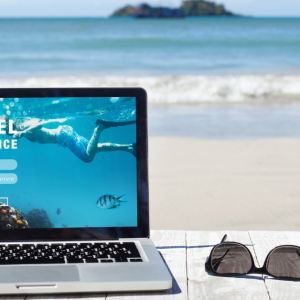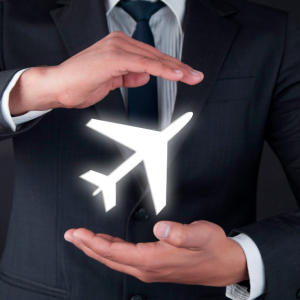Equipment travel insurance provides crucial protection for valuable items while traveling. From cameras to laptops, musical instruments to sports gear, this insurance safeguards your equipment against loss, damage, or theft during your journey. In this article, we will delve into the world of equipment travel insurance, exploring its benefits, coverage options, considerations before purchasing, and tips for choosing the right policy. Whether you’re a professional photographer, musician, athlete, or simply a traveler with expensive gadgets, read on to discover why equipment travel insurance is essential for peace of mind on your next adventure.
Introduction to Equipment Travel Insurance

Equipment travel insurance is a specialized type of insurance designed to protect valuable items while traveling. Here’s a detailed overview of what equipment travel insurance entails:
What is Equipment Travel Insurance?
- Equipment travel insurance is a form of coverage that provides financial protection for personal belongings and equipment while traveling.
- It typically covers items such as cameras, laptops, musical instruments, sports gear, and other valuable equipment against loss, damage, theft, or accidental destruction during travel.
Importance of Equipment Travel Insurance:
- Traveling with valuable equipment poses inherent risks, including loss, damage, or theft, which can result in financial losses and disruption to travel plans.
- Equipment travel insurance offers peace of mind by providing reimbursement or replacement for damaged or lost items, ensuring that travelers can continue their journey without significant financial burden.
Types of Equipment Covered:
- Equipment travel insurance policies vary in coverage, but commonly covered items include electronic devices, photography equipment, musical instruments, sports gear, and specialized tools.
- Some policies may also extend coverage to accessories, such as lenses, cases, and peripherals, depending on the insurer and policy terms.
Coverage Options:
- Equipment travel insurance typically offers coverage for various types of risks, including accidental damage, theft, loss, and destruction due to unforeseen events such as fire, floods, or natural disasters.
- Policyholders can choose coverage options tailored to their specific needs, including coverage limits, deductibles, and additional riders for high-value items or specific risks.
Benefits of Equipment Travel Insurance:
- Provides financial protection: Equipment travel insurance reimburses travelers for the cost of repairing or replacing damaged, lost, or stolen items, minimizing financial losses.
- Peace of mind: Knowing that valuable equipment is covered gives travelers peace of mind, allowing them to focus on enjoying their trip without worrying about potential losses or disruptions.
- Convenience: In the event of equipment damage or loss, travelers can quickly file a claim with their insurance provider and receive reimbursement or replacement, facilitating a smoother travel experience.
Considerations Before Purchasing:
- Before purchasing equipment travel insurance, travelers should carefully review policy terms, coverage limits, exclusions, and conditions to ensure that it meets their specific needs and provides adequate protection for their belongings.
- Factors to consider include the cost of the insurance premium, coverage scope, deductible amounts, claim process, and any additional services or benefits offered by the insurer.
Types of Equipment Covered
Equipment travel insurance policies typically cover a wide range of valuable items that travelers may carry with them during their trips. Here’s a detailed look at the types of equipment commonly covered by these policies:
1. Electronic Devices:
- Equipment travel insurance often covers electronic devices such as smartphones, tablets, laptops, cameras, camcorders, and drones.
- These devices are susceptible to damage, theft, or loss while traveling, making them essential items to include in insurance coverage.
2. Photography Equipment:
- Photography enthusiasts can protect their expensive camera bodies, lenses, tripods, and other accessories with equipment travel insurance.
- This coverage is crucial for professional photographers or hobbyists who rely on their photography gear for capturing memorable moments during their travels.
3. Musical Instruments:
- Musicians traveling with their instruments can benefit from equipment travel insurance, which covers instruments such as guitars, violins, keyboards, and wind instruments.
- This coverage provides financial protection against damage or loss of instruments, ensuring that musicians can continue to perform without interruptions.
4. Sports Gear:
- Travelers engaged in outdoor activities or sports can insure their equipment against damage, theft, or loss with equipment travel insurance.
- Sports gear such as skis, snowboards, golf clubs, bicycles, diving equipment, and camping gear are typically covered under these policies.
5. Business Tools:
- Professionals traveling for work may carry specialized tools or equipment necessary for their occupations, such as medical devices, scientific instruments, or technical tools.
- Equipment travel insurance can provide coverage for business-related items, ensuring that professionals can perform their duties effectively while traveling.
6. Audiovisual Equipment:
- Travelers carrying audiovisual equipment for presentations, conferences, or events can protect their projectors, sound systems, microphones, and other AV gear with insurance coverage.
- This coverage safeguards against damage or loss of audiovisual equipment during transit or while in use at various venues.
7. Specialty Items:
- Some equipment travel insurance policies may offer coverage for specialty items such as jewelry, artwork, antiques, or collectibles, depending on the insurer and policy terms.
- Travelers with high-value or sentimental items can inquire about specialized coverage options to ensure comprehensive protection for their belongings.
8. Accessories and Peripherals:
- In addition to covering main equipment items, equipment travel insurance may extend coverage to accessories, peripherals, or add-ons such as memory cards, lenses, cases, chargers, or adapters.
- Including accessories in the insurance coverage ensures comprehensive protection for all components of valuable equipment.
Benefits of Equipment Travel Insurance
Equipment travel insurance offers several benefits to travelers, providing financial protection and peace of mind while on the road. Here are the key benefits of having equipment travel insurance:
1. Financial Protection:
- One of the primary benefits of equipment travel insurance is financial protection against unexpected expenses resulting from damage, loss, or theft of valuable items.
- In the event of an incident, the insurance coverage reimburses travelers for the cost of repairing or replacing damaged equipment, minimizing financial losses.
2. Peace of Mind:
- Equipment travel insurance provides peace of mind to travelers, knowing that their valuable belongings are covered against potential risks during their journeys.
- With insurance coverage in place, travelers can relax and enjoy their trips without worrying about the financial implications of equipment damage or loss.
3. Coverage for Various Risks:
- Equipment travel insurance typically covers a wide range of risks, including accidental damage, theft, loss, or destruction due to unforeseen events such as fire, floods, or natural disasters.
- Regardless of the cause of the incident, travelers can rely on insurance coverage to mitigate the financial impact of equipment-related losses.
4. Flexibility and Customization:
- Insurance policies for equipment travel insurance offer flexibility and customization options to tailor coverage to individual needs and preferences.
- Travelers can choose coverage limits, deductibles, and additional riders based on the value of their equipment, travel destinations, and specific risks they want to protect against.
5. Seamless Claims Process:
- In the event of equipment damage, loss, or theft, equipment travel insurance policies typically offer a streamlined claims process for travelers to file claims and receive reimbursement or replacement.
- Insurance providers facilitate a hassle-free claims process, allowing travelers to quickly address equipment-related incidents and resume their travel plans.
6. Support During Emergencies:
- Equipment travel insurance often includes assistance services for travelers facing emergencies related to their equipment, such as arranging repairs, replacements, or emergency transportation.
- Travelers can rely on the support of insurance providers to navigate unexpected situations and ensure continuity of their travel plans.
7. Coverage for Specialized Items:
- For travelers carrying specialized equipment such as photography gear, musical instruments, or sports gear, equipment travel insurance offers dedicated coverage tailored to the unique needs of these items.
- Specialized coverage ensures comprehensive protection for valuable equipment used for professional or recreational purposes.
8. Worldwide Coverage:
- Equipment travel insurance typically provides worldwide coverage, allowing travelers to protect their belongings wherever they go, whether traveling domestically or internationally.
- Regardless of the destination or travel itinerary, travelers can rest assured that their equipment is covered against risks during their journeys.
Considerations Before Purchasing Equipment Travel Insurance

Before purchasing equipment travel insurance, travelers should carefully evaluate their needs, review policy terms, and consider several factors to ensure that they choose the right coverage for their equipment. Here are the key considerations to keep in mind:
1. Value of Equipment:
- Assess the value of the equipment you plan to take on your trip, including electronic devices, photography gear, musical instruments, sports equipment, or other valuable items.
- Determine the total value of your equipment to ensure that you purchase adequate coverage that provides reimbursement or replacement for the full value of your belongings in case of damage, loss, or theft.
2. Coverage Limits and Deductibles:
- Review the coverage limits and deductibles specified in the insurance policy to understand the maximum amount of coverage provided for each item and the out-of-pocket expenses you may incur before receiving reimbursement.
- Consider whether the coverage limits and deductibles align with the value of your equipment and your budgetary preferences.
3. Coverage Scope and Exclusions:
- Examine the coverage scope and exclusions outlined in the insurance policy to understand what types of risks are covered and any specific conditions or scenarios that may be excluded from coverage.
- Pay attention to exclusions such as pre-existing damage, intentional acts, wear and tear, or loss due to negligence, as these may impact the extent of coverage provided.
4. Trip Duration and Frequency:
- Consider the duration and frequency of your trips when selecting equipment travel insurance, as coverage options may vary depending on the length of your trip and the frequency of your travels.
- Determine whether you need single-trip coverage for a specific journey or annual coverage for multiple trips within a specified period, and choose a policy that meets your travel patterns.
5. Additional Riders and Services:
- Evaluate whether you require additional riders or services offered by the insurance provider to enhance your coverage, such as coverage for high-value items, rental equipment, or specialized risks.
- Explore optional services such as emergency assistance, roadside assistance, or concierge services that may be available as add-ons to your insurance policy.
6. Policy Terms and Conditions:
- Read the policy terms and conditions carefully to understand the terms of coverage, claim process, documentation requirements, cancellation policies, and any other relevant provisions.
- Clarify any questions or concerns with the insurance provider or agent before purchasing the policy to ensure that you have a clear understanding of your rights and obligations as a policyholder.
7. Reputation of Insurance Provider:
- Research the reputation and financial stability of the insurance provider before purchasing equipment travel insurance to ensure that you are dealing with a reputable and reliable company.
- Read reviews, testimonials, and ratings from other travelers, and check the insurer’s credentials, licensing, and accreditation to gauge their trustworthiness and customer satisfaction.
Exclusions and Limitations
While equipment travel insurance offers valuable protection for valuable items during trips, it’s essential to be aware of the exclusions and limitations that may apply to the coverage. Here are common exclusions and limitations to consider:
1. Pre-existing Damage:
- Most insurance policies exclude coverage for pre-existing damage to equipment, meaning that any damage or wear and tear present before the start of the policy period will not be covered.
- Travelers should thoroughly inspect their equipment before purchasing insurance to ensure that pre-existing damage is addressed separately or repaired before the trip.
2. Negligence and Recklessness:
- Insurance policies typically exclude coverage for damage, loss, or theft resulting from negligence or reckless behavior on the part of the insured.
- Actions such as leaving equipment unattended in public areas, failing to secure belongings properly, or using equipment in unsafe conditions may void coverage under the policy.
3. Unattended Items:
- Insurance coverage may be limited or excluded for items left unattended in public places, vehicles, or accommodations without proper supervision or security measures in place.
- Travelers should take precautions to secure their equipment when not in use, such as using lockable storage, safes, or carrying items with them at all times.
4. Intentional Acts:
- Insurance policies typically exclude coverage for damage or loss resulting from intentional acts, including deliberate acts of vandalism, theft, or misuse of equipment.
- Any deliberate actions taken by the insured to cause damage to their equipment or falsely claim insurance benefits may result in the denial of coverage and potential legal consequences.
5. War and Terrorism:
- Some insurance policies may exclude coverage for damage, loss, or theft of equipment resulting from acts of war, terrorism, civil unrest, or political instability in the travel destination.
- Travelers should check policy terms regarding coverage for incidents related to war and terrorism and consider purchasing additional coverage if necessary.
6. Extreme Sports and Activities:
- Insurance coverage may be limited or excluded for equipment used in extreme sports or high-risk activities, such as skydiving, mountaineering, or bungee jumping.
- Travelers engaging in such activities should inquire about specialized coverage options or consider purchasing separate adventure sports insurance to ensure adequate protection.
7. Unapproved Locations:
- Insurance policies may exclude coverage for equipment used or stored in locations that are not approved or authorized by the insurer, such as war zones, embargoed countries, or areas with high crime rates.
- Travelers should check policy terms regarding coverage restrictions for specific travel destinations and avoid carrying valuable equipment to prohibited or unsafe locations.
8. Specific Exclusions and Conditions:
- Insurance policies may include specific exclusions, conditions, or limitations that vary depending on the insurer and policy terms.
- Travelers should carefully review policy documents and consult with insurance providers to understand any additional exclusions, conditions, or restrictions that may apply to their coverage.
How to Obtain Equipment Travel Insurance

Obtaining equipment travel insurance involves several steps to ensure that travelers select the right coverage and policy for their specific needs. Here’s a detailed guide on how to obtain equipment travel insurance:
1. Research Insurance Providers:
- Start by researching reputable insurance providers that offer equipment travel insurance. Look for companies with positive reviews, strong financial stability, and a track record of reliable customer service.
- Utilize online resources, comparison websites, and recommendations from friends, family, or travel professionals to identify potential insurance providers.
2. Compare Coverage Options:
- Review the coverage options, policy terms, and pricing offered by different insurance providers to compare and evaluate their suitability for your needs.
- Consider factors such as coverage limits, deductibles, exclusions, additional riders, and optional services to determine which policy offers the best value and coverage for your equipment.
3. Assess Your Equipment Needs:
- Assess the value of the equipment you plan to take on your trip and determine the types of risks you want to protect against, such as damage, theft, loss, or destruction.
- Consider the specific items you need to insure, their value, and any specialized coverage requirements based on the nature of your travel activities or destinations.
4. Request Quotes:
- Contact insurance providers or use their online platforms to request quotes for equipment travel insurance based on your coverage needs and travel plans.
- Provide accurate information about the value of your equipment, trip duration, destination, and any additional requirements to receive customized quotes from insurance providers.
5. Review Policy Terms and Conditions:
- Carefully review the policy terms and conditions provided by insurance providers to understand the extent of coverage, exclusions, claim process, documentation requirements, and any other relevant provisions.
- Pay attention to details such as coverage limits, deductibles, coverage periods, cancellation policies, and any additional services or benefits included in the policy.
6. Purchase the Policy:
- Once you’ve selected a suitable insurance policy, complete the purchase process by submitting the required information, documentation, and payment to the insurance provider.
- Ensure that you receive confirmation of your policy purchase and a copy of the policy documents outlining the terms and conditions of coverage.
7. Document Your Equipment:
- Before your trip, document your equipment by creating an inventory of items, including descriptions, serial numbers, purchase receipts, and photographs.
- Keep a copy of this documentation with you during your travels and store digital copies securely in case you need to file a claim with your insurance provider.
8. Contact the Insurance Provider for Assistance:
- If you have any questions or concerns about your coverage, claims process, or policy details, don’t hesitate to contact the insurance provider or agent for assistance.
- Clarify any uncertainties before your trip to ensure that you have a clear understanding of your coverage and know how to proceed in case of an equipment-related incident.
Claim Process and Coverage Documentation
Understanding the claim process and having the necessary documentation in place is essential for travelers who need to file a claim for equipment travel insurance. Here’s a detailed overview of the claim process and the documentation required:
1. Notify the Insurance Provider:
- In the event of equipment damage, loss, or theft during your trip, notify your insurance provider as soon as possible to initiate the claims process.
- Contact the insurer’s claims department or customer service hotline to report the incident and provide details about the circumstances surrounding the loss.
2. Provide Documentation:
- To support your claim, you will need to provide documentation that verifies the value of the lost, damaged, or stolen equipment.
- This documentation may include purchase receipts, invoices, warranties, appraisals, serial numbers, photographs, or any other evidence of ownership and value.
3. Complete Claim Forms:
- Your insurance provider will likely require you to complete claim forms detailing the incident, the items involved, and the extent of the damage or loss.
- Provide accurate and detailed information on the claim forms to facilitate the claims processing and evaluation process.
4. Submit Supporting Evidence:
- Along with the claim forms, submit any supporting evidence or documentation requested by the insurance provider to substantiate your claim.
- This may include police reports (in the case of theft), repair estimates, witness statements, or any other relevant documentation related to the incident.
5. Cooperate with the Claims Adjuster:
- In some cases, the insurance provider may assign a claims adjuster to assess the validity of your claim and determine the extent of coverage.
- Cooperate with the claims adjuster by providing access to the damaged items, providing additional information as requested, and answering any questions about the incident.
6. Review the Claims Settlement:
- Once the claims process is complete, review the claims settlement provided by the insurance provider to ensure that it accurately reflects the coverage and reimbursement you are entitled to receive.
- If you have any questions or concerns about the settlement, contact your insurance provider for clarification or assistance in resolving any discrepancies.
7. Receive Reimbursement or Replacement:
- Upon approval of your claim, you will receive reimbursement or replacement for the lost, damaged, or stolen equipment as specified in your insurance policy.
- Depending on the terms of your policy and the insurer’s procedures, reimbursement may be provided in the form of a cash payment, repair or replacement of the damaged item, or a voucher for replacement equipment.
8. Keep Records of Communications:
- Throughout the claims process, keep detailed records of all communications with your insurance provider, including phone calls, emails, letters, and documentation submitted.
- Having a record of communications can help in case of any disputes or issues that arise during the claims process and provide evidence of your efforts to cooperate and resolve the claim.
In conclusion, equipment travel insurance offers invaluable protection for travelers seeking peace of mind and financial security while exploring the world with their valuable belongings.
By covering a wide range of equipment types, including electronic devices, photography gear, musical instruments, sports equipment, and more, this specialized insurance ensures that travelers can enjoy their journeys without worrying about potential losses, damages, or thefts of their equipment.
By carefully considering coverage options, assessing individual needs, and understanding the claims process, travelers can obtain the right insurance policy and be well-prepared to handle any equipment-related incidents that may arise during their travels.
With comprehensive coverage and proactive planning, equipment travel insurance provides travelers with the assurance they need to embark on their adventures with confidence.
